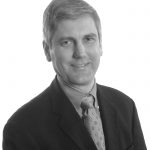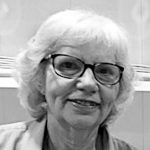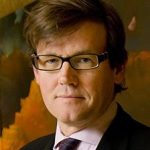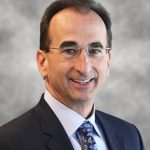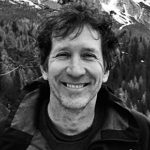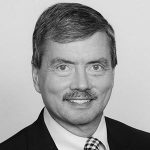Episode 11
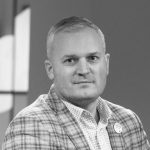
Kalev Kallemets
CEO of Fermi Energia
Power to the People of Estonia
In this episode, Kalev Kallemets explains his motivation in bringing advanced nuclear technology to Estonia and his hope to bring Estonia closer to reaching its climate change goals.
Note: This transcript is the raw transcript of this podcast. Minimal edits have been made only for clarity purposes.
Kalev Kallemets (0:10):
And that, I think this is totally fair that the people are well, not only skeptical, but kind of pushing it away. And so we do have a practical value proposition to the municipality in terms of how much benefit they would monetarily gain over the operating period of the plant.
Narrator (0:37):
Did you know that there are half a million metric tons of nuclear waste temporarily stored at hundreds of sites worldwide? In the U.S. alone, one in three people live within 50 miles of a storage site. No country has yet successfully disposed of commercial spent nuclear fuel, but it’s not for lack of a solution. So what’s the delay? The answers are complex and controversial. In this series, we explore the nuclear waste issue with people representing various pieces of this complicated puzzle. We hope this podcast will give you a clearer picture of Nuclear Waste: The Whole Story.
We believe that listening is an important element of a successful nuclear waste disposal program. A core company value is to seek and listen to different perspectives. Opinions expressed by the interviewers and their subjects are not necessarily representative of the company. If there’s a topic discussed in the podcast that is unfamiliar to you, or you’d like to more closely review what was said, please see the show notes at deepisolation.com/podcasts.
Elizabeth Muller (01:56):
Hello. My name is Elizabeth Mueller. I’m the CEO of Deep Isolation. I’m here today with Kalev Kallemets, who is the CEO of Fermi Energia and really happy to have him. And maybe I’ll let you introduce yourself Kalev.
Kalev Kallemets (02:10):
Yeah, my name is Kalev from Estonia and we’re trying to do a small modular reactor deployment in Estonia likely to do at 59. And we right now have minus 15 degrees outside. So we really need heat and electricity.
Elizabeth Muller (02:30):
Yes. What first got you interested in nuclear?
Kalev Kallemets (02:35):
I was studying economics, and that is quite a long time ago, at the master’s level. And I did the master’s thesis on a listing of publicly owned companies. And one of the biggest is the government owned utility, which was engaged in an Lithuanian nuclear power plant project. And that was curious about the economics of nuclear energy. And it turned out that like I said, also in Bret Kugelmass’ “The Economics of Nuclear Energy” is really fantastic. So 20 years you’re paying down the capital cost. And after that for 20-60 years, which is the case with most older reactors, your cost is really much, much lower and it’s effectively like printing money.
Elizabeth Muller (03:23):
And how is Fermi Energia looking to bring nuclear or advanced nuclear to Europe?
Kalev Kallemets (03:31):
Yeah. So first up, I would qualify also in Gen III+ as advanced, compared to second generation plants that don’t have passive safety systems. So yeah, we are a small country in Estonia. We are basically a common system with two other Baltic nations, Lithuania and Latvia. So about a total of something like 5 million population and like roughly 30 million, 30 TWh hour consumption. So not a big place and we can’t do large nuclear and also from three perspectives and the cost perspective that’s prohibitive. And that was also demonstrated in the Lithuanian project in the vast complexity in a large nuclear deployment project, but if you have a smaller project that is much more manageable and you can approach it with a private capital angle. And yeah, we are currently in the European Union and we have CO2 pricing and today a CO2 price reached 40 euros per ton, meaning something like close to $50 per ton. And that’s, I mean, with that price, all of coal would be shut down in the United States. And, I mean, and it has to happen also in Europe eventually, actually in 15 years and, our current government has decided to shut down oil shale, which is the predominant fuel for power generation in Estonia, to shut it down in 15 years. So we have to do a base load that is really dispatchable and we have to, so we don’t know any other alternatives.
Elizabeth Muller (05:24):
Yeah. And what is the hardest part of your work?
Kalev Kallemets (05:29):
Yeah, the complexity of it. So it’s not just about technology, it’s just not about economics. It’s the many, many issues happening at the same time. You have to be at the top of your game on energy economics, technology, I mean nuclear technology, but also the waste issues, international cooperation, politics, I mean domestic politics, energy policy, geopolitics communication, team-building, financing. And I mean, the list goes on. So it’s a, yeah, I love it.
Elizabeth Muller (06:04):
And, and why did you decide to do this through a startup company rather than through other methods?
Kalev Kallemets (06:12):
Yeah, that’s the best question I think. So yeah, we started up talking with the Estonian government on utility, but they said this is not our strategy. Our strategy is the mainstream thing, which is doing windmills and solar and keeping the existing fossil plants running. And also obviously the politicians, they don’t have the vision of 15 years, what is their thinking about the next elections. And which is kind of natural – I’ve been a member of parliament so I know. So I thought, and I have the practical experience working within the government, that if you are able to make a concrete proposal, which is actionable, timely, budgetary, and has a meaningful positive impact to the society. And the alternative is to do nothing. Then sometimes if you’re lucky and have good timing and everything works in your favor, you might get the positive outcome. So we thought we’d give it a try. And we have in Estonia, a culture of actually having multiple, multiple globally successful technology companies. Well, I wouldn’t say we’re Silicon Valley or something like that, that would be too exorbitant. But yes, we do have some companies that have been successful, some openness to technology, ability to learn, and execute and raise money.
Elizabeth Muller (07:49):
What are the longer term goals for the company, are you going to stop at Estonia? Or are you also looking at other locations?
Kalev Kallemets (07:57):
Yeah, Estonia first. So what I’m aiming to do, I’m so enthused about what you are doing, Elizabeth, it’s bringing the best product to the market and you have a best product on the waste issue. I want to have the best product on nuclear energy deployment service, like product. And that’s what we are aiming to do. And I see a market opening in wider Europe for multiple, multiple projects, but nuclear is a very long term thing. It’s like a glacier, but if you’re stuck, get going, we think we’re good.
Elizabeth Muller (08:33):
So you mentioned the nuclear waste issue. Is that a big concern in Estonia and what do people think the right thing to do is?
Kalev Kallemets (08:43):
Yeah, absolutely. The same has been so successful. And we’ve been doing many surveys among the population and even the accident risk doesn’t play as strong as the concern about the waste. Somehow there is a perception that it’s a kind of gaseous thing that kind of emits and goes somewhere and moves somehow and is kind of mobile. So which is kind of a very easy thing to refute.
Elizabeth Muller (09:15):
So in many ways it looks like you’re actually doing the responsible thing by talking about, and by planning for the nuclear waste disposal before you’ve created a reactor in the first place. Is anybody else thinking like that or is it mostly a legacy problem?
Kalev Kallemets (09:34):
Yeah, it’s probably a legacy problem, but my background also led me to think about it immediately. I’m kind of a weird person that I’ve been in so many places, and I’ve been a founder of Estonian Geological Survey, a government agency when I worked in the Ministry of Economic Affairs. And I know about Estonian geology, even though I’m an economist by training. And I knew that we have a solid bedrock that is the same bedrock that Finland and Sweden have. So my presumption was that it should be possible in Estonian territory to determine the locations or areas where the bedrock is a safe environment for Deep Isolation solution. And I’m pretty pleased to see that confirmed.
Elizabeth Muller (10:32):
Now, of course, we’ve just published a joint piece of work on the geology of Estonia and how it could potentially be a suitable solution for nuclear waste disposal. What’s next? What is coming up and what are the next steps to move forward?
Kalev Kallemets (10:51):
Yeah, yeah. Like with any study, I think that the rational thing is to end up, what really happens is that the reports are looked at skeptically. And I think the government is well-advised that they would review from third sources. Then they would read the report carefully first and then consult with third-party consultants from International Atomic Energy Agency and other let’s say international partners on the details. And I would, I’m pretty confident that they find the satisfactory confirmations that the deep borehole solution has very strong potential. And then the rational thing is to, if the government decides to move ahead with the SMR consideration option, first planning and then other steps, then strategy should be developed then permitting that would, when we would go into actual construction permitting of the SMR deployment, it would be also at the same time. How do I say, permitting for specific action plan with dates, budgets, organization, arrangements, legal arrangements in place to make sure when, who, where, how, the spent fuel is being taken care of safely for the public. And if you have that, I think it is, yeah, it’s a very good product.
Elizabeth Muller (12:41):
And what about stakeholder engagement and community consultation? How and when would that happen?
Kalev Kallemets (12:48):
All the time? That has to happen all the time. I was just on the phone with some folks in the region that I know already first name basis and like in official meetings, meeting after work and discussing things openly, honestly – we have in Estonia because we are such a small nation. We have a very unofficial way how we just talk with each other. So it’s kind of a small family.
Elizabeth Muller (13:28):
So you feel like you’re already on the path to, to gaining the trust of the people who will be impacted?
Kalev Kallemets (13:35):
Yeah, I’ve been, I’ve been actually working in this area for a better half of my working life and I, yeah, I know many people there. Well, it’s more than 1000 kilometers away from Chernobyl so that this accident definitely is something that we need to address and the concerns related to potential of hazard to the population or capability to develop as an operating organization in the future. And also the basic know how about SMR technologies that we are currently considering. So there is some, what is the procedure of actually regulating, permitting, what are the political decision points? And obviously, like I explained, rational human responses, skepticism, and there is a lot of talking that needs to be happening. And this is the only way that human relations do development. You cannot assume that you’ll have, you can go in some place and start building stuff. So then you have to get familiar with the people.
Elizabeth Muller (14:51):
Yeah. And, what do they see is the upside, what, what is it that is positive from the perspective of stakeholders and communities and citizens?
Kalev Kallemets (15:02):
Yeah, I think that there definitely has to be a value proposal if you want to deploy something serious in a location, and we in Estonia call it like a billion dollar project and you do not offer a value proposal to the people. And your value proposal is you’re going to have jobs, some kind. This is like not serious. This is like lying, or it’s just like cheating or something. And that, I think this is totally fair that the people are well, not only skeptical, but kind of pushing it away. And so we do have a practical value proposition to the municipality in terms of how much benefit they would monetarily gain over the operating period of the plant. And also, I believe that one benefit that the nuclear power plant is producing is power, right?
Kalev Kallemets (16:11):
So it should, it should deliver power to the people. And we did the numbers. And if the municipality there, the population is reasonably low, it’s not like tens of thousands, or is relatively, let’s say a few thousand people. It can supply free power for thousands of people, and it is absolutely possible. And doesn’t impact, like in a major way, the economics, it’s a much bigger problem if you neglect that issue. And then you would have the situation that you have in the Kingdom of Belgium, the situation in Sweden, or the situation in Germany. And that is a much bigger financial and fiduciary risk for the whole project. And I would say for the whole society, if, if there are misalignment of interests.
Elizabeth Muller (17:03):
Could you say a little bit more about that? What do you see as the big issues in those locations?
Kalev Kallemets (17:09):
Alright, you have massive taxation and the nuclear phase out policies in place, because there is a misalignment of interests. So if there is a, in a society as well, if there would be very severely strong misalignment of wealth then you would have social unrest. If you would have a misalignment of, I don’t know, other interests, then you would have instability, inherent instability in the system. So I think I’m looking north to Finland, and there are two reasons I find why they are able to build new nuclear power plants in Finland, even to this point the Chernobyl and Fukushima events happening, that they do have a wide ownership base within the society. And wide benefit sharing around the society, Like when you say municipalities, shareholders in a nuclear power plants, like tens of municipalities and also industrial companies, not just some kind of anonymous big power company, big, bad, ugly, like a utility, but it is owned by the people. So it’s not, it’s not like communism, but it’s like shareholder capitalism, and that really works.
Elizabeth Muller (18:36):
And then at the Estonian sort of, whole of country level what do you see as the vision, if they’re able to move forward with this reactor, how will it impact the country as a whole?
Kalev Kallemets (18:50):
Oh, definitely very significantly. Like I said, we’re population wise 1.3 million. So economically it’s, it would be a very substantial project to deploy even two or three reactors, very substantial. And it would require very significant learning for the whole society. And I think that this is one of the things that excites me and why we call our company Fermi Energia, because this is a fascinating science of controlling the strong force. How we discovered this strong force and how it was like this international project, how nuclear energy continues to be, always continues to be absolutely international like you and me speaking. So it’s, I love it.
Kalev Kallemets (19:43):
I love, I love the international element of it and bringing like truly people get together around science and knowledge then, and taking the effort, mental effort and discipline of learning and engaging deeply and seriously with other people. And I think that this is the heart of democracy as well, and I’m very passionate about our Western values about cooperation, transcend that think manner and very passionate about market economy, also working for the benefit of the people. So I want all of those aspects happening, then I would be very pleased to pass it on to my children.
Elizabeth Muller (20:28):
Well, your passion certainly comes across. Is there anything else that you would like to add?
Kalev Kallemets (20:35):
Yeah, I think I’ve, I’ve said so much. So we are, we’re very early in the beginning and and we’re right now in the money raising period, and it’s so fascinating to see new investors coming in. We need to do nuclear? And we need to cooperate with really a lot of people. And there is no one else, no one else, but us to do that. I know for a fact, so this brings a responsibility for me that kind of fate has spoken that, that we have to do with this. And yeah, we’re doing it and we have to face out for sides. We have to do it, and we have to make practical, smart decisions to have nuclear reach the potential that well, maybe it’s like a CMO wrote about, and the people dreamt about when, when nuclear was originally developed.
Elizabeth Muller (21:34):
Well, thank you so much, Kalev. It was really wonderful talking to you. I think we share a passion for the future, so really thank you. And thank you for your time.
Kalev Kallemets (21:45):
Yeah. All right. Right.

Nuclear Waste 101
Understand more about nuclear waste and its implications for you and your community.

FAQS
Deep Isolation answers frequently asked questions about our technology, our process, and safety.


